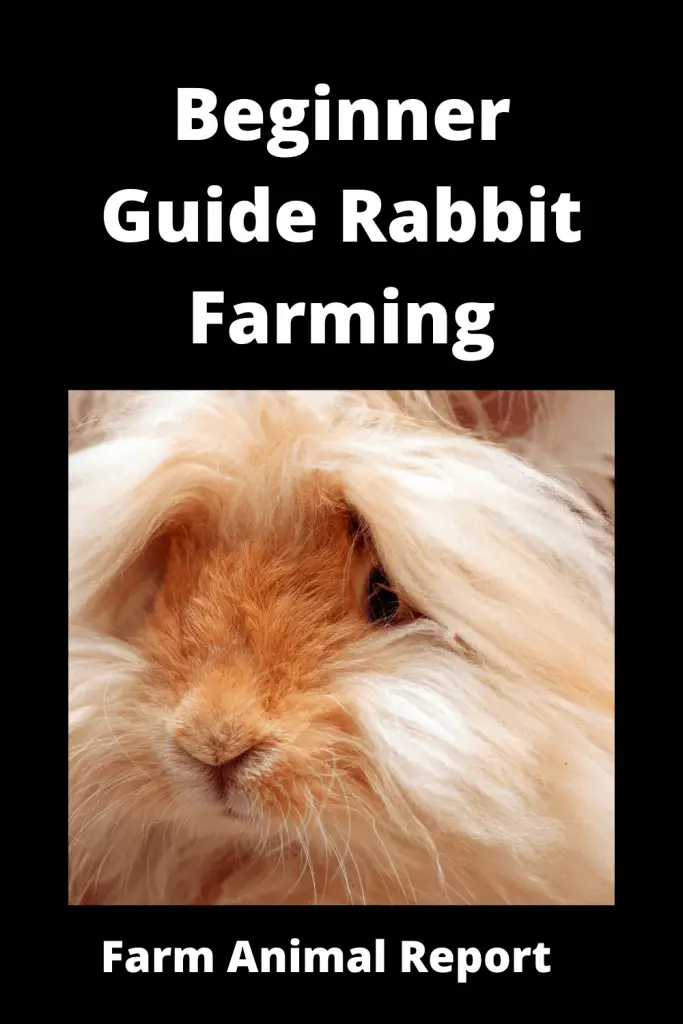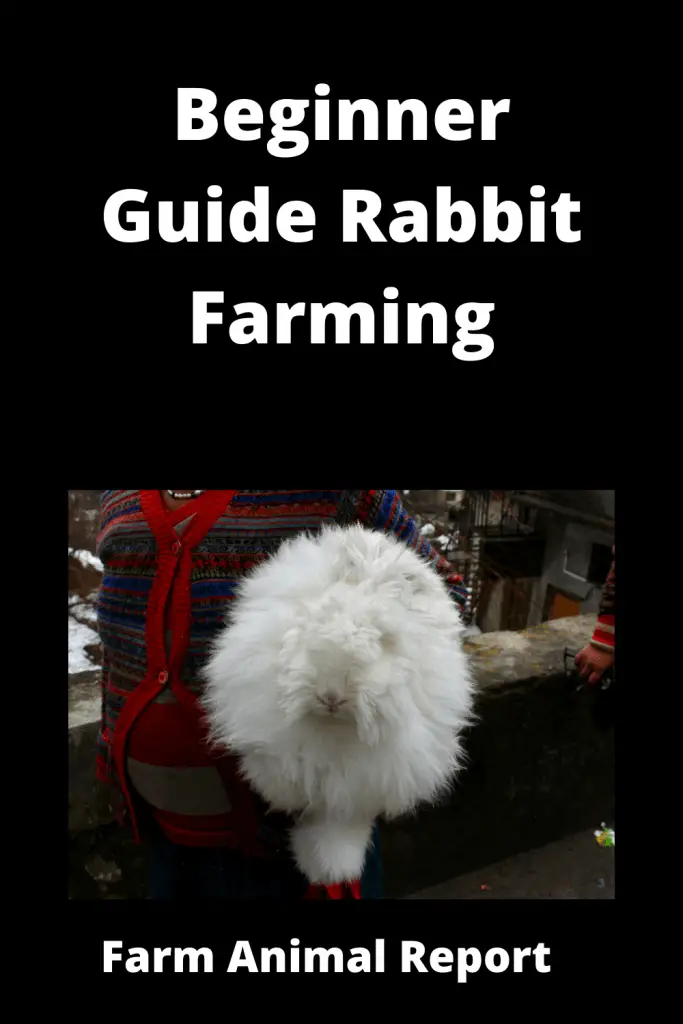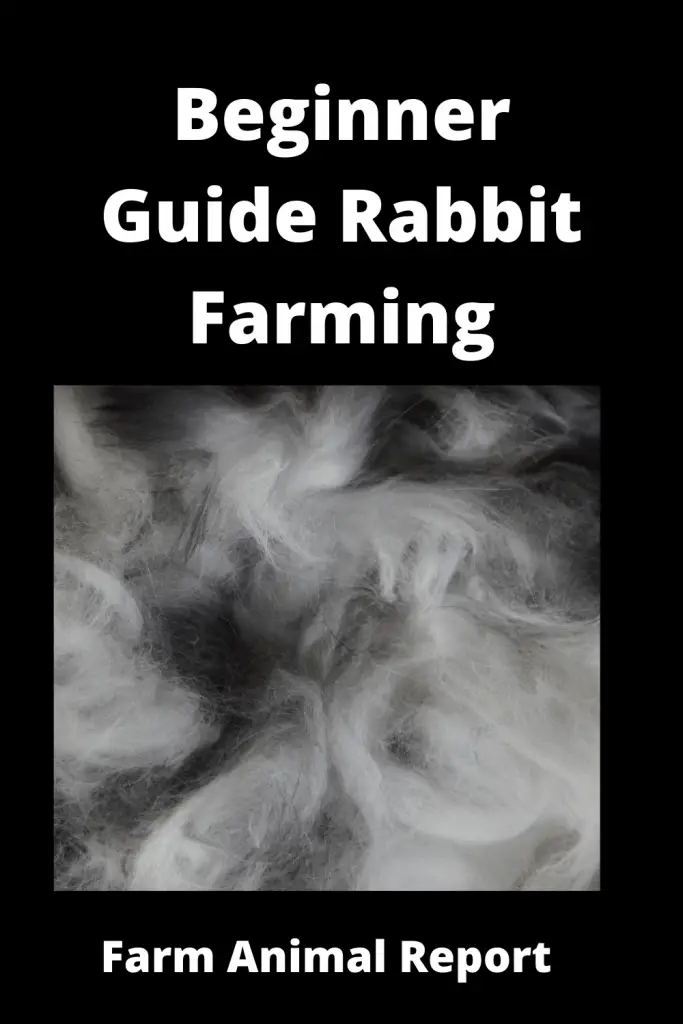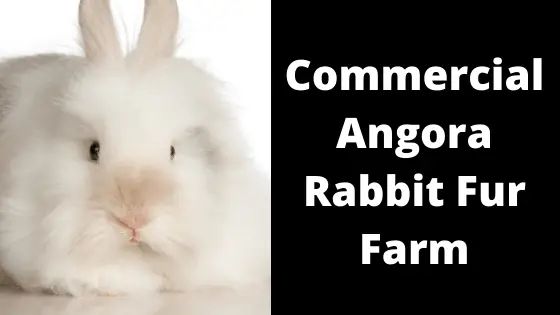As a general rule Rabbit Farming branches into two directions 1) Meat 2) Fur Rabbit farmers raise angora rabbits and then sell the highly sought after angora fur. Giant Angora weighing in around 10-12 pounds when full-grown, can produce up to 2.5 pounds of wool a year (about 25% of their weight!) Prices Fluctuating Between $10 – $ 16 per oz in 2017. Rabbits are not harmed just fur is shaved as it grows.
Rabbit Farming for Fur
Beginner Guide Rabbit Farming. We have been Researching how this Product of Commercial Rabbit Farming, a supply of Rabbit Pelts that will come from Your Rabbit Farm. We have found no large US markets for selling Your Rabbit Pelts. We have found some Exotic Fur Importers that will buy Tanned Pelts, nothing for selling Raw Pelts.
Most of the small rabbit Farms, if they are having any success in finding a profitable way to sell their pelts. They were doing it online, on eBay. Most were selling tanned, at least salted pelts. We saw tanned prices ranging from $ 2 – $ 6, each. But Read on you will be amazed.
Beginner Guide Rabbit Farming / Rabbit Fur Industry
Rabbit Fur Farming is a little different than Producing Rabbits for Meat Production. We looked at Raising Rabbits for Meat Production / Now we are examining Raising Rabbits for Fur / I assumed that Rabbit Meat farmers were then selling their pelts as a side business to their Rabbit Farming. But as you follow this Research you will see that doesn’t seem to flow that way.

You can also Read our Guide –18 Ways to Make Money by Rabbit Farming—Extensive Guidelines for Rabbit Farmers
Raw – Rabbit Pelts to Sell
We looked at Rabbit Meat Producers taking their Pelts from the Harvesting of their Meat herds. We found several that the Pelts wasted in their freezers because of not finding and marketing Outlet. Others Took the pelts along with the rest of the carcasses and ground them into organic fertilizers, other ways to make use of the rest of the Rabbit.
Tanned – Rabbit Pelts to Sell
We did find a lot of smaller Farmers – Tanning their Rabbit hydes and selling them online. We found Great challenges in selling them in Bulk due to these factors
- Size and age of rabbit
- Color of pelt
- Softness and feel of pelt
- tanning methods
- Quality of Pelt
- Please look at this Grading Guide.
- Also if you are a Rabbit Meat Farmer Please also look at this Resource for possible consideration on how to further use you Rabbit Pelts from your Meat Farm. The United States says this Importer Imports 100,000 – 200,000 Rabbits pelts a year. So there might be Markets developed By Creative Farmer.
Raising Giant Angora Rabbits Profitability Table
Ok, let’s get to all the good stuff we found. In Examing Rabbit Fur Market. There is a great opportunity for a Commercial Rabbit farmer to Raise Rabbits for their Fur. There is a great market for Angora Wool. We tried to be Conservative in all our Numbers. Looking at our tables, please double, triple check our numbers.
Giant Angora weighing in around 10-12 pounds when full-grown, they can produce up to 2.5 pounds of wool a year (about 25% of their weight!). But it will give you a place to start. Some of the immediate differences you will see is as follows
- Rabbit Fur Production is Fur is the Product
- Rabbits do not have to be killed
- The average lifespan of Rabbit is 7 – 12 Years
- Rabbits could give years of fur producing
- looking for pelt perfection is not near so critical
- These tables do not reflect capital
- These Tables do not reflect Labor – This is more labor-intensive than producing for meat
- Easier to find Sales outlet for fur
- No need for refrigeration – things that are critical for meat producers
- Diseases have different consequences for the different type of rabbit farming
- Capital Expenses would still be the same. just not turning over your Rabbit Herds
- Giant Angora Rabbits can produce 2.5 + lbs of Fur per Year
Rabbit Giant Angora Fur Profitability Table
| Rabbits | Rabbits Born / Yr | 0z wool / Year 40 OZ / Rabitt | Average Price / oz $10.00 | Feed Cost / Yr $ .30 per day / $ 110 per Year | Total Revenue Possible |
|---|---|---|---|---|---|
| 1 | 84 | 3,360 | $ 33,600 | $ 9,240 | $ 24,360 |
| 2 | 168 | 6,720 | $ 67,200 | $ 18,480 | $ 48,720 |
| 5 | 420 | 16,800 | $ 168,000 | $ 46,200 | $ 121,800 |
| 10 | 840 | 33,600 | $ 33,6000 | $ 92,400 | $ 243,600 |
| 20 | 1680 | 67,200 | $ 672,000 | $ 184,800 | $ 487,200 |
| 30 | 2520 | 100,800 | $ 1,008,000 | $ 57,200 | $ 950,800 |
| 40 | 3360 | 134,400 | $ 1,344,000 | $ 369,600 | $ 974,400 |
| 50 | 4200 | 168,000 | $ 1,680,000 | $ 462,000 | $ 1,218,000 |
| 100 | 8400 | 336,000 | $ 3,360,000 | $ 924,000 | $ 2,436,000 |
| 200 | 16,800 | 672,000 | $ 6,720,000 | $ 1,848,000 | $ 4,872,000 |
Average Giant Angora Weight 10lb
40 Oz shaved Fur per Rabbit per Year
Feed $ .30 per day for 10lb Rabbit
Types of Rabbit Fur
- Typical/regular Hair – This is where most of the Rabbit Breeds fall. Their hair ranges from 7/8 – 1 1/8″ in length. Normal Bunny Hair Follicles contain 14 Hairs.
- Rex – Hair – Each Follicle contains 50 Hairs each their length is 5/8 to 7/8″ in length. When you feel it is extremely soft and plush to feel when you stroke your fingers through their hair.
- Satin
- Woolen / Angora Breeds – the best Angora Hair being 12–16 micrometers in diameter is what is most sought for. Prices Fluctuating Between $10 – $ 16 per oz in 2017.

The Angora Breeds are the one Most Bred and Farmed for their Fur. Angora Rabbits History Brings them from Angora Turkey in 1723, by sailors. When it came to America it was called the Angora Wolly. The line of Angora Rabbits are very Docile. They do not mind being handled. make an excellent breed for Farming or also Pets. Those Breeds are.
- American Fuzzy Lop – Is a dwarf Bunny, weighing to 3.5 – 4 lbs and he lives to about 8 years old. Their hair grows to a length of 2″ – Their Hair can be Spun into wool. They do not need a lot of grooming. The fuzzy Lop comes in various colors. They are prone to ” wool block.” They eat their own hair when molting. They are not able to digest it or throw up a hairball like a cat.
- French Angora – is a large Rabbit weighing up to 10.5 lbs. It is the second most popular angora Breed. They are Commercial Breed – They are one of the easiest to take care of as far as diet, bedding and those type of maintenance. Their Coat of Fur needs maintenance, they need to be brushed weekly or sometimes daily. The Farmers need to shave them 3 – 4 times a year. The French Angora’s Fur can grow up to 6″ per year. It has a variety of Colors. White, Grey, Black, Chocolate, and Lilac. Because of their long fur, they also are subject to “Wool Block”
- English Angora – This is the only Angora that has Facial Features, Side hair Trimmings, and dense bands of Hair on Face. They are very labor-intensive in having to keep their hair from being tangled and matted. frequent brushing is mandatory. Their Hair grows amazingly fast. Rabbit Fur farmers reporting they need shaved 4 Times a year. The Same rainbow of Colors are also in this breed.
- Satin Angora – This is a commercial Rabbit which is a medium-size Angora Rabbit. Weighing 4 – 9lbs. – History to Breeder John C Fehr in the 1930s. Again Bred with French Angoras – Resulted in this Breed of Angoras. They are used for Fur Farming from Farmers that shave this Rabbit for its wool. Their hair is like in Human Hair, that as you cut it, it grows back. The Hair of the Satin Angora, like it, sounds its fur is finer and softer to the touch. The reason its fur shines is a recessive gene that caused the base of the hair to appear translucent. Colors are White, Tan, Grey, and brown.
- Giant Angora – these are a very large Breed of Angoras. Weighing 9.5 – 12 lbs. This Breed was accepted int the American Breeders Association in 1988. It was a cross between the Larger Commercial Angoras and german Angoras – It is an all-White Rabbit. This Breed produces the Most Fur. Their Coat has three types of Fur, soft underwool, awn fluff, and awn hair. They do not molt. Their hair needs shaved 3 – 4 Times a year and the wool is perfect for dying. Making socks and Gloves.
What is Wool Block
Symptoms of Wool Block – This is a major problem with all long hair groups of rabbits. Rabbits are generally very clean animals, they will groom themselves. Much like cats that do the same.
With cats when they have an accumulation of hair, a cat simply regurgitates up a furball. rabbits are not able to do that, so the hair accumulates in the Rabbits digestive tract.
It might plug its digestive track up. It might begin to starve to death thinking it was full and stopped eating. can be fatal if not addressed.
- Rabbits are very clean creatures cleaning themselves regularly.
- Decreased Appetite
- Stopped Eating Completely
- Fewer Rabbit Droppings
- Droppings strung together with hair
- Might be able to feel a large block with your fingers.
How to Prevent Wool Block
Here are some of the recommended treatments for Wool Block and how to prevent it.
- Daily Brushing and Grooming your Rabbits
- Making sure the diet is heavy with Fiber. It helps Rabbit to pass hair through its system – a large problem where Rabbits are just fed Pellets and not getting enough Roughage.
- Feeding enzymatic supplement to help dissolve hair
- Naturally plain unsweetened pineapple pieces in small amounts every few days
- Plenty of Exercises will keep everything moving through the rabbit’s digestive tracks. Problem with immobile Rabbits
- Please take suspected Rabbit to your Vet for examination, they may give laxative, enemy, or if all else fails may have to operate to free Blockage
Softest Rabbit Fur – Mini Rex Angora
It is thought that the Mini – Rex Angora rabbit Breed has the softest Fur. these Rabbits were first discovered in France in the early 1900s. It was imported and has been accepted in the ARBA / American Rabbit Breeders Association.

- Crossed early with Netherland dwarf rabbits
- They are a small compact Breed
- Have very Velvety Fur
- Fur stands straight up
- Small and make good Pets
- Are very Popular in Shows
- Cannot Over Groom Them
- Should never bathe them
- The hair on their feet is less dense giving them a susceptible to sore Hocks
- The fur is usually 1/2″ Hair
- Small – around 5lb
- They have a lifespan of around 5 – 7 Years
- Like most Angora Rabbits cost around $ 50
- Food cost around $50 – $70 per Year – See Food Calculation for Giant Angoras which are twice the size.
Human Rabbit Fur Allergies
Many People have Allergies to Small Animals. Dogs, Cats, and also Rabbits. The reaction that has are people sneezing, coughing, and eyes watering. And actually it can happen to any animal with Fur. According to the American College of Allergy approx 10% of the Population has Pet Allergies.
For people with Pet Allergies, Best Solution is Avoidance – if that is not possible suggestions
- Avoidance of Pet Hair and Dander
- Nasal Sprays – antihistamines and bronchodilators
- Allergy Shots
Rabbit Farming Fur Parasites
Here are some of the most common Parasites that Rabbit farmers need to deal with
- Fleas
- Lice
- Mites
- Fungus – Ring Worm
- Ticks
- Internal Parasites – Worms – Tape – Round
Can Rabbits Die from Mites?
There are three types of mites that are parasites on Rabbits. usually, Mites are treatable, but in cases of untreated and heavy infestations, they can emaciate the Rabbit and even cause death.
- Ear Mites – manifest them in the Ears of the Bunnies – Rabbits will shake their Heads, inside the ears may look black and Crusty.
- Fur Mites – Walking Dandruff – Usually accumulates around the Rabbits back – Between the Rabbits Shoulder Blades.
- Harvest Mites – also called “Chiggers” – They are most prevalent in the Fall. It can be seen with the Eye as bright orange dots. usually found around Ears, Belly, Head and Feet.
How to Get Rid of Mites on Rabbits Naturally / Medically
- Natural / Soothe Itch – Creams Oils – Chamomile – St John’s Wort – Kava Kava
- Natural / Garlic Powder to food
- Medically / Ivermectin
Rabbit Mites on Humans
Here is a few of the Mites ( Illinois Dept of Health) that might be on your Rabbits and then be passed to people.
- Chiggers / Harvest Mites
- Rodent Mites
- Bird Mites
- Scabies Mite





